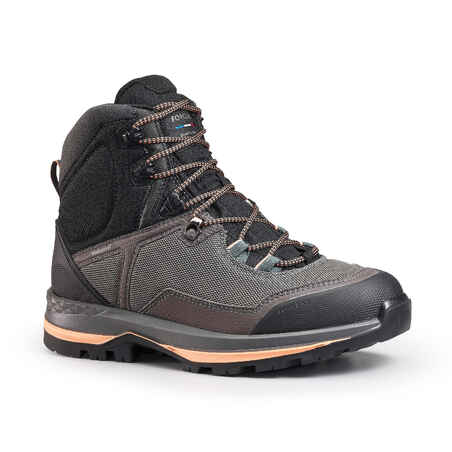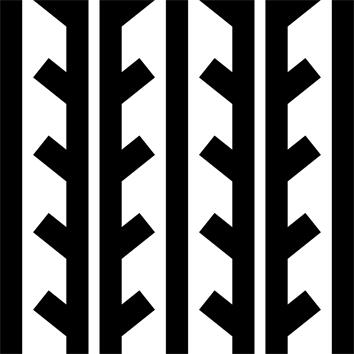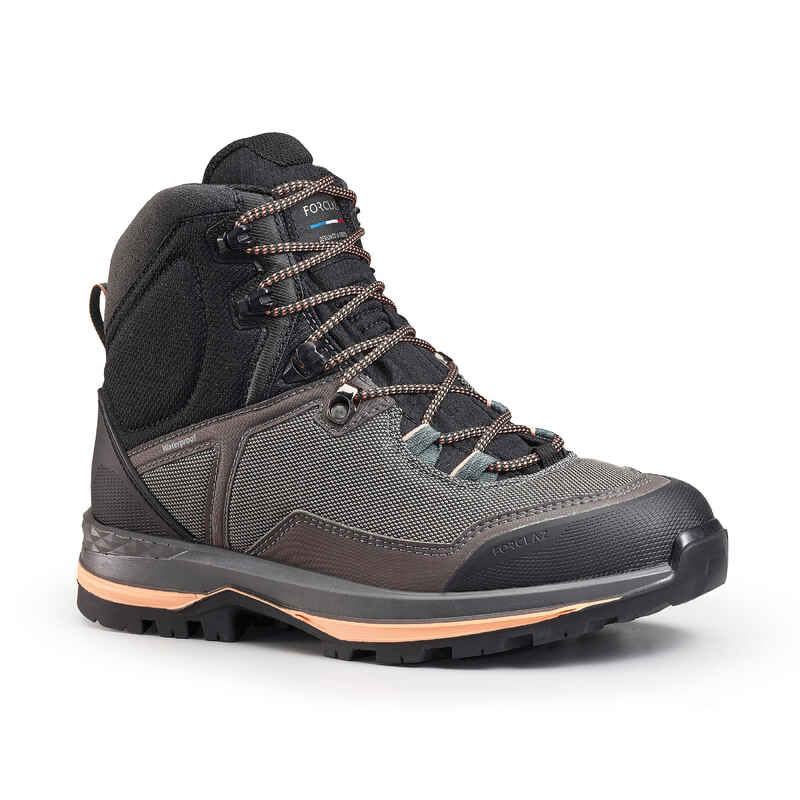Where are our trekking shoes made?
These Trekking boots are manufactured in the European Union, in Romania, in a factory that specialises in making trekking boots.
Routes suited to this boot
This boot is designed for trekking on generally low altitude routes and/or on easier marked trails.
Advantages and drawbacks of this textile model
Benefits
- The synthetic materials are lightweight and flexible giving you unquestionable immediate comfort.
- The synthetic materials give good ventilation. (these synthetic models are more suited to the summers)
Disadvantages:
- For water resistance, they must really be combined with a waterproof membrane. (this is the case for all our Forclaz trekking boots)
- Maintain waterproofing over time using temporary treatments.
Contact® technology for our soles
The grip and traction of our soles is certified CONTACT®
To be awarded certification, the boots must pass laboratory tests to assess the grip rate on different surfaces (Smooth, Rugged, Dry, Wet). To validate these tests, we assess the quality of our soles in the field, the mountains, by a panel of representative testers over 500 km
Their notching also gives you grip adapted to muddy or wet terrain
This boot’s waterproof level
This boot has been tested and validated for 10,000 flexes repeatable, equivalent to a 15 km walk, in water reaching the mid-upper. This now guarantees a good level of boot waterproofing.
--> Our assessment indicates a LEVEL OF 3/5 giving 6 hours of waterproofing when hiking in the rain.
The details of tests carried out to assess the waterproofing of our boots is below.
Make this boot’s waterproofing last longer
Even though this model has a membrane (waterproof, breathable), it is recommended you use a waterproof spray several times a year to restore the original water-repellent properties and prevent staining
--> It revitalises the water-repellent properties of the outer material (water runs off the surface and doesn't soak in). Each fabric section is then sprayed and in particular the seams are not to be forgotten. (water loves the seams!)
Maintain your textile boots step by step
1 / Use a brush and/or a sponge to clean; remove any soil or mud.
2/ Then leave to air dry, away from any heat source.
3 / Shake the waterproof spray can
4 / Spray the product from a distance of 25 cm
5 / Leave for at least 10 minutes. Caution: Do not rub or wipe.
Increase your boot’s waterproofing with a gaiter
The waterproofing of boots is often compromised because water gets in at the collar of the boot.
--> To keep your feet dry for longer, it is advisable to use a waterproof gaiter or mini-gaiter that will prevent water as well as pebbles and sand from getting inside through the top of the boot.
Model perfectly suited for wear with this MT500 black trekking gaiter (8347880)
Choosing your size is an important point.
For hiking, do not hesitate to buy one size larger than the usual size to guarantee excellent comfort on the descent and to avoid toes rubbing at the tip of the shoe. Tip: keep your toenails short and, before descending, check that your lacing prevents your foot from sliding forwards inside the boot.
Try your boots out step by step
How to choose your boots:
1. Try on both shoes, standing up, with the socks worn for hiking.
2. Tighten the laces correctly.
3. Check the following two areas of comfort: the base of the heel and the front part of the foot going down.
4. Stand up to walk with the boots on.
5. Try on several sizes and several models.
6. Gradually start using you shoes during your first few hiking trips to break them in.
Waterproofing test carried out on this model
Our boots are laboratory tested by 2 consecutive tests.
Test 1: We test the effectiveness of the membrane alone immersed in water under air pressure. We simply check for any bubbles on the surface like a pierced air chamber.
Test 2: Thanks to a mechanical arm that simulates walking, the entire boots are half immersed in water and they complete thousands of flexes to check that the inside of the boot remains dry and it is therefore waterproof.
5 levels of waterproofing
During the waterproofness test, we test 5 levels of waterproofness:
- 2,000 flexes (approximately 4 km, 30 minutes of walking)
- 10,000 flexes (approximately 10 km, 3 hours of walking)
- 30,000 flexes (approximately 15 km, 6 hours of walking)
- 50,000 flexes (approximately 20 km, 8 hours of walking)
- 100,000 flexes (approximately >20 km, 24 hours of walking)























